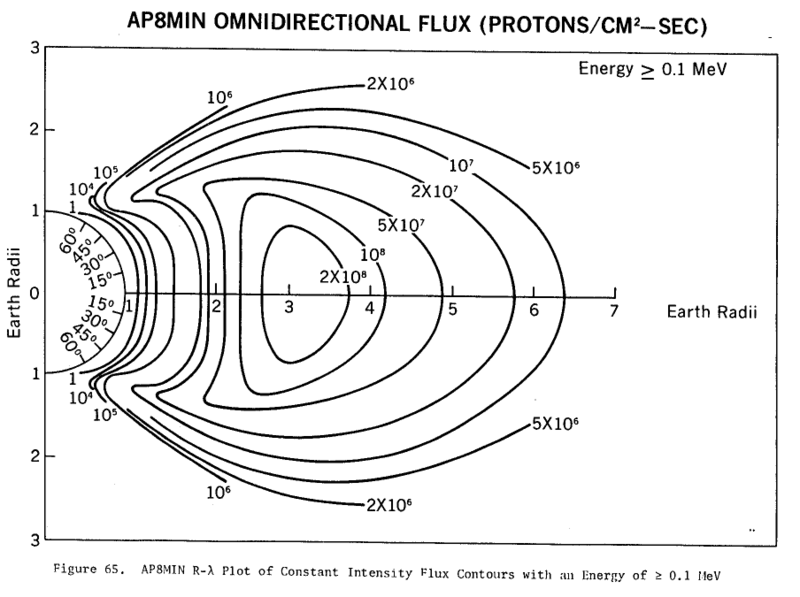|
Size: 409
Comment:
|
Size: 1287
Comment:
|
| Deletions are marked like this. | Additions are marked like this. |
| Line 5: | Line 5: |
| {{ attachment:800px-Ap8-omni-0.100MeV.png }} | |
| Line 11: | Line 10: |
| This could be the show stopper. Mass shielding is out of the question, | Silicon dioxide develops a positive charge when irradiated. An ionizing particle passes through, and generates hole-electron pairs. The electrons are highly mobile, and diffuse or drift out, while the holes get trapped, and leave a positive charge. Hafnium oxide develops a negative charge, trapping electrons. A stack of both shows promise as a rad-hard gate oxide, withstanding 10Mrad from a Cobalt 60 source with minimal shifts. I wonder if that is tuned for Co60? Perhaps a wider spectrum of radiation energies, as would be found in the Van Allen belt, would preferentially charge either the HfO or the SiO2, leaving a residual imbalance? In any case, it does demonstrate how modern gate oxides may be much more rad hard than older technologies. |
| Line 22: | Line 22: |
| Line 24: | Line 25: |
[[http://www.isde.vanderbilt.edu/content/muri_2008/dixit_muri2008.pdf]] Sriram Dixit et. al. at Vanderbilt University. Recent work on HfO/SiO2 stacked gates and radiation resistance. {{ attachment:800px-Ap8-omni-0.100MeV.png }} |
The Space Environment
The inner and outer van Allen belts
MORE LATER
Ionizing radiation and semiconductor damage
Silicon dioxide develops a positive charge when irradiated. An ionizing particle passes through, and generates hole-electron pairs. The electrons are highly mobile, and diffuse or drift out, while the holes get trapped, and leave a positive charge. Hafnium oxide develops a negative charge, trapping electrons. A stack of both shows promise as a rad-hard gate oxide, withstanding 10Mrad from a Cobalt 60 source with minimal shifts. I wonder if that is tuned for Co60? Perhaps a wider spectrum of radiation energies, as would be found in the Van Allen belt, would preferentially charge either the HfO or the SiO2, leaving a residual imbalance? In any case, it does demonstrate how modern gate oxides may be much more rad hard than older technologies.
MORE LATER
Ionizing radiation, charge upsets and latchup
MORE LATER
Drag
MORE LATER
References
http://www.isde.vanderbilt.edu/content/muri_2008/dixit_muri2008.pdf Sriram Dixit et. al. at Vanderbilt University. Recent work on HfO/SiO2 stacked gates and radiation resistance.

